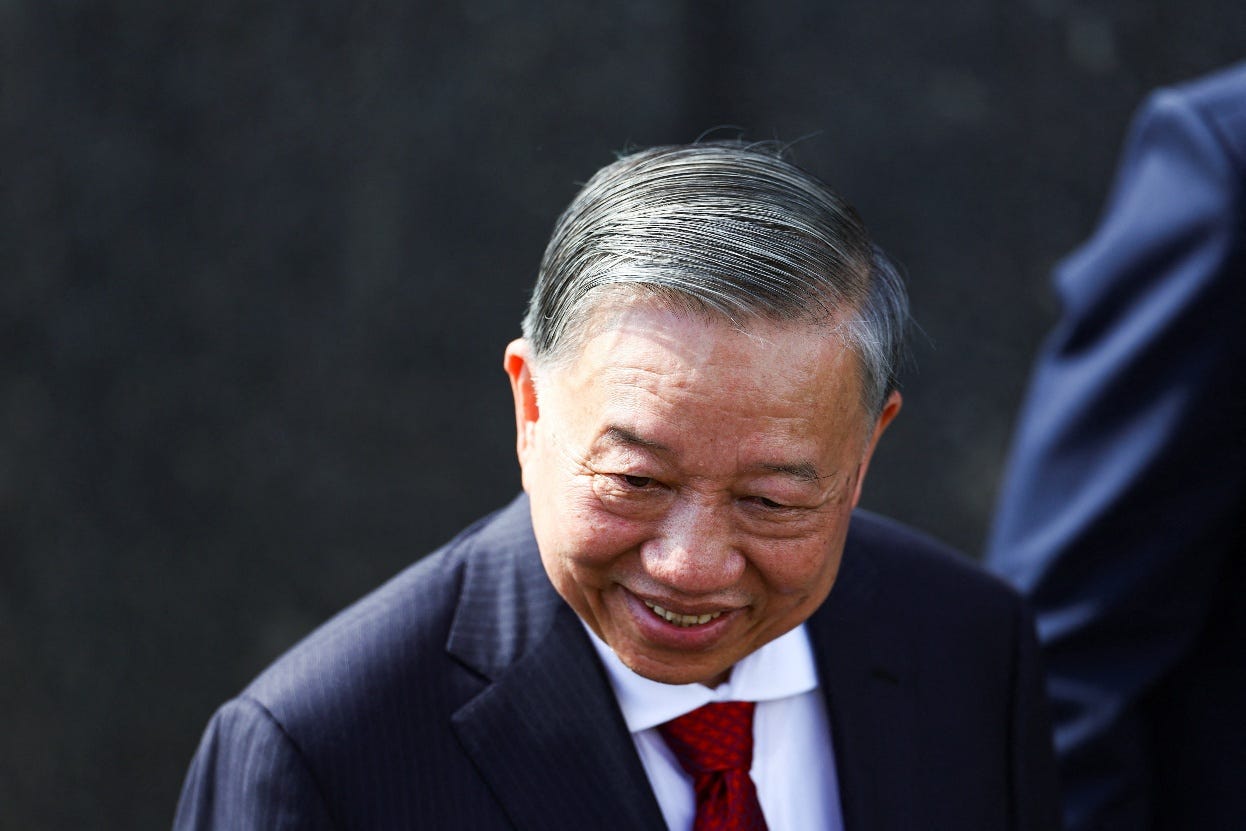Vietnam’s Risky Gamble in Pyongyang
Hanoi announces General Secretary Tô Lâm will visit North Korea
By: Khanh Vu Duc
Vietnam is attempting a high-stakes diplomatic balancing act, navigating between Washington, Beijing, Moscow, Seoul, and Tokyo, all while stepping carefully around North Korea. One wrong move could have ripple effects far beyond Hanoi.
Carefully Leaked Visit
Reports that Vietnamese General Secretary Tô Lâm is preparing to visit Pyongyang in October read less like routine diplomacy than a deliberate leak. By allowing Reuters to cite unnamed officials rather than confirming the trip, Hanoi appears to be testing international reactions before committing to a move with potentially far-reaching consequences.
At first glance, the visit seems low stakes: trade between Vietnam and North Korea is negligible, and cultural exchanges carry symbolic rather than material weight. Yet the act of showing up in Pyongyang, especially as the head of Vietnam’s Communist Party, signals more than friendship. It positions Hanoi as an active player in a region fraught with historical tensions, global sanctions, and unresolved conflicts.
Between Giants and Allies
Tô Lâm is stepping onto a geopolitical tightrope strung between Washington and its Asian allies on one side, and Beijing, Moscow, and Pyongyang on the other. Every move risks upsetting one camp or the other, with consequences for Vietnam’s trade, security, and diplomatic standing.
Washington under Trump 2.0 has intensified economic pressure to pull Vietnam closer into its orbit, leveraging tariffs, supply-chain realignments, and defense cooperation. Seoul is one of Vietnam’s largest investors and a critical source of defense technology. Tokyo and the EU are strategic partners whose trust Vietnam cannot afford to jeopardize. Leaning toward Pyongyang could unsettle these relationships, while appearing too aligned with Washington could strain ties with China and Russia.
Vietnam has navigated such balancing acts before. In 2019, Hanoi hosted the Trump-Kim summit, briefly placing itself at the center of world diplomacy. Though the summit ended without agreement, it demonstrated Vietnam’s ability to act as a neutral venue and a trusted intermediary—a role Hanoi may be trying to replicate now.
Risks, Rewards, and the Wire
Kim Jong-un, while deepening ties with Moscow and Beijing, faces limits to overdependence on any single ally. An indirect overture to Washington via Hanoi offers a safer path than direct negotiation. Tô Lâm may be serving as a discreet messenger in an undeclared negotiation, while simultaneously showcasing Vietnam’s independence and strategic relevance.
But the tightrope is perilously thin. North Korea could conduct missile tests that inadvertently embroil Hanoi, Washington, and Seoul might read Vietnam’s visit as a tilt toward Pyongyang, and Beijing or Moscow could question Hanoi’s discretion. The unpredictable nature of Trump’s America—evidenced by his Pentagon rebranding and high-level military meetings—adds another layer of risk.
The potential upside is prestige and recognition as a skilled intermediary, capable of engaging all sides without fully aligning with any. The downside is exposure to political, economic, and reputational fallout. Tô Lâm’s trip may reaffirm Vietnam’s bridge-builder role—or it may mark an overreach where every misstep is magnified.
For now, the world watches a man walking a wire. The fall, should it come, will not be his alone.

